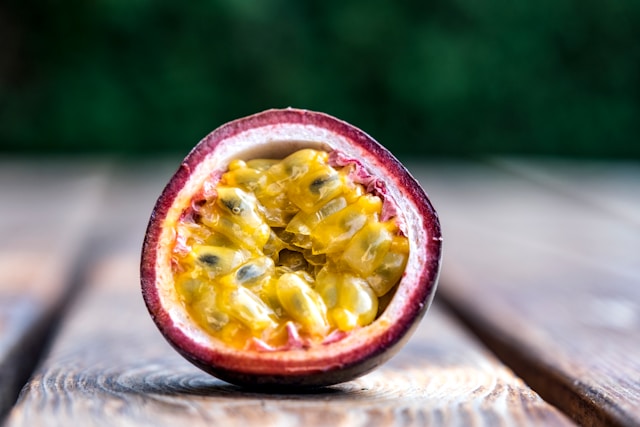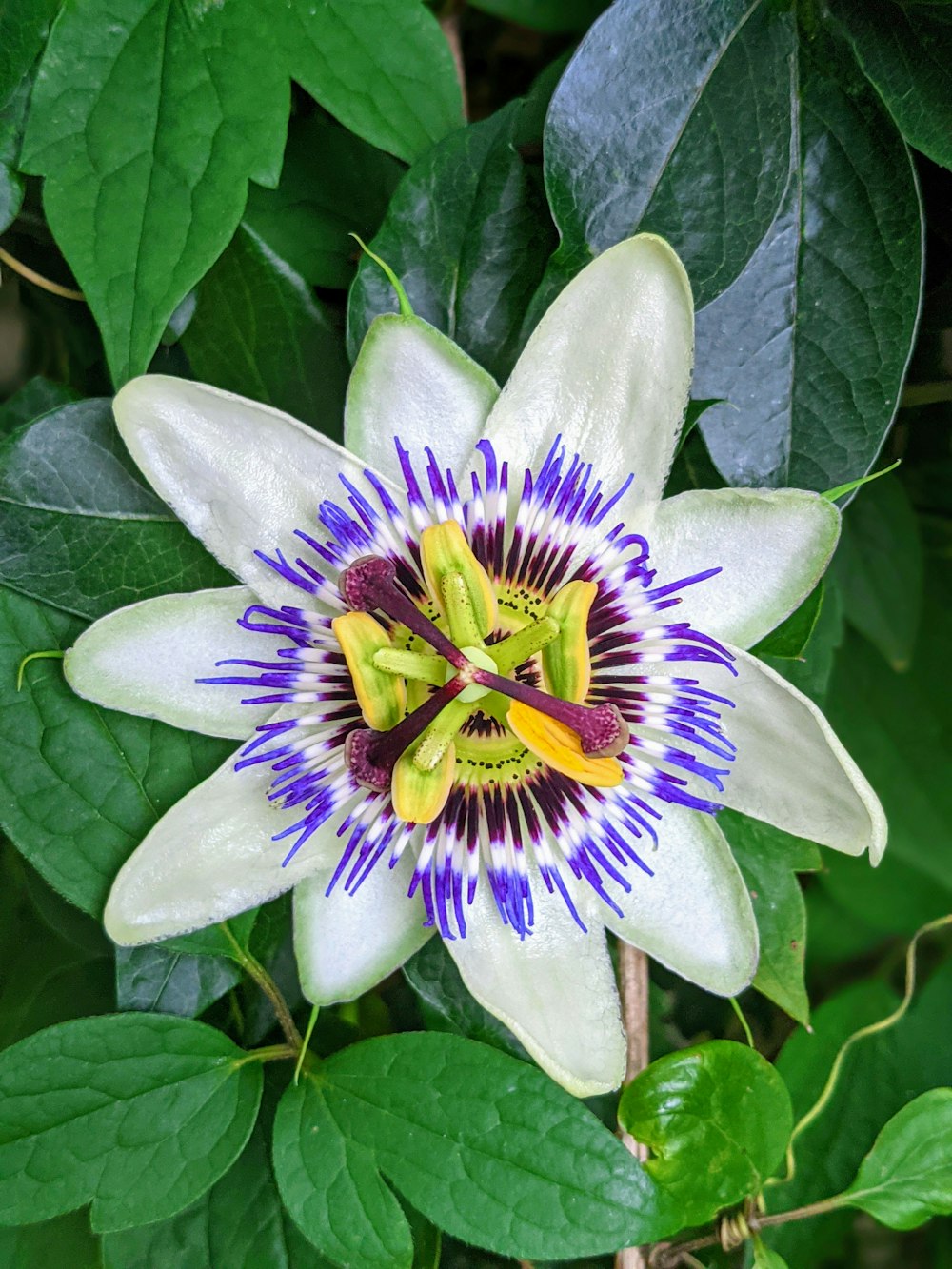
Growing Passion Fruit in Pots in 2024
Passion fruit is a fruit loved by many for its unique flavor and health benefits. You might have seen it in juices, desserts, or even as a topping on yogurt. But have you ever wondered if you could grow it in a pot? That’s what we’re going to explore here.
Nowadays, more and more people are interested in growing their own food, even if they don’t have a big garden. In 2024, with cities getting busier and space becoming limited, finding ways to grow fruits and vegetables in small spaces like balconies or patios is becoming more popular. So, let’s take a closer look at whether growing passion fruit in pots is possible and why it’s relevant today.
Benefits of Growing Passion Fruit in Pots
Growing passion fruit in pots offers several advantages that make it an attractive option for many people, especially those living in urban areas or with limited outdoor space.
Flexibility in Location
One of the main benefits of growing passion fruit in pots is the flexibility it provides in terms of location. Unlike traditional gardening, where you’re limited to planting in the ground, pots can be placed anywhere with adequate sunlight, whether it’s a balcony, patio, or even indoors near a sunny window. This means that even if you don’t have a backyard, you can still enjoy growing your own passion fruit.
Ease of Maintenance
Pots are easier to maintain compared to traditional gardens because they require less weeding and soil preparation. Additionally, pots can be moved around more easily, making tasks like watering, pruning, and harvesting more convenient. This is especially beneficial for those with physical limitations or busy schedules who may not have the time or energy for extensive gardening chores.
Control Over Growing Conditions
Growing passion fruit in pots allows you to have greater control over the growing conditions, such as soil quality, drainage, and moisture levels. You can choose the ideal potting mix for your plants and adjust watering and fertilization according to their specific needs. This level of control can result in healthier plants and higher yields.
Suitable for Urban Dwellers and Renters
For people living in apartments or rental properties with limited outdoor space, growing passion fruit in pots offers a way to enjoy gardening without the need for a permanent garden plot. Pots can easily be moved from one location to another, making them suitable for renters who may need to relocate frequently. Additionally, growing fruit in pots can add beauty and greenery to urban environments, contributing to a more sustainable and vibrant cityscape.
Overall, the benefits of growing passion fruit in pots make it an accessible and rewarding option for urban dwellers, renters, and anyone else looking to enjoy the pleasures of gardening in limited outdoor spaces.
Selecting the Right Pot and Soil
Choosing the correct pot size and soil is crucial for the successful growth of passion fruit in containers.
Pot Size and Material
When selecting pots for growing passion fruit, it’s important to choose ones that are large enough to accommodate the plant’s root system and provide ample space for growth. A pot with a diameter of at least 18-24 inches and a depth of 12-18 inches is recommended for a single passion fruit vine. Additionally, opt for pots made of durable materials such as plastic, ceramic, or terracotta, ensuring they have drainage holes at the bottom to prevent waterlogging.
Soil Selection
The type of soil used in container gardening significantly impacts the health and growth of passion fruit plants. Passionfruit plants will grow in different kinds of soil, but they grow best in sandy soil that’s not too light or heavy, with a pH level between 6.5 and 7.5. It’s important that the soil drains well and has lots of organic material. Before you plant the passionfruit, mix in things like Tui Sheep Pellets and compost to enrich the soil. If the soil is too acidic, add some Tui Lime.
Well-draining soil is essential to prevent waterlogged roots, which can lead to root rot and other issues. Consider using a lightweight potting mix specifically formulated for container gardening, which typically consists of a blend of peat moss, perlite, and compost. This type of soil mixture promotes good drainage while retaining moisture and nutrients necessary for plant growth.
It’s also a good idea to add organic matter, such as compost or aged manure, to the potting mix to improve soil structure and fertility. Avoid using heavy garden soil or soil from the ground, as it may compact over time and hinder root growth.
Choosing the Right Passion Fruit Variety
When selecting a passion fruit variety for container gardening, it’s essential to consider factors such as fruit size, flavor, and growth habit to ensure it thrives in a confined space. For example, the purple varieties like the Nellie Kelly are a good choice for cooler climates because they’re bred to thrive in those conditions.
Here are some popular passion fruit varieties suitable for container gardening:
Passiflora edulis (Purple Passion Fruit)
This is the most common variety of passion fruit, known for its purple-skinned fruit with sweet-tart flavor. It’s well-suited for container gardening due to its compact growth habit and ability to produce fruit in pots. Purple passion fruit vines can reach lengths of 15-20 feet but can be pruned to maintain a manageable size in containers.
Passiflora ligularis (Giant Granadilla)
As the name suggests, this variety produces large, round fruits with sweet, aromatic flavor. Giant granadilla vines are vigorous growers, so they require a larger container and ample support for their sprawling growth habit. While they may be more challenging to grow in pots compared to other varieties, they can still be cultivated successfully with proper care and attention.
Passiflora quadrangularis (Giant Granadilla)
Similar to the giant granadilla, this variety produces large, oblong-shaped fruits with a sweet and tangy flavor. Giant granadilla vines are robust and fast-growing, making them suitable for container gardening with adequate support and space. They thrive in warm, tropical climates and require regular pruning to keep their size manageable in pots.
Passiflora caerulea (Blue Passion Flower)
While primarily grown for its ornamental flowers, the blue passion flower also produces small, edible fruits with a mildly sweet flavor. This variety is well-suited for container gardening due to its compact growth habit and ability to thrive in various environmental conditions. Blue passion flower vines can be trained to climb trellises or allowed to cascade over the edges of pots, adding a decorative element to your container garden.
When selecting a passion fruit variety for container gardening, consider your climate, available space, and personal preferences regarding fruit flavor and appearance. With the right care and attention, you can enjoy a bountiful harvest of passion fruit from your container garden.
Growing Passion Fruit in Pots
Planting and caring for passion fruit in pots is a manageable task with the right approach. Here’s a step-by-step guide to help you:
Planting: Dig a hole in the center of the pot that is slightly larger than the root ball of the passion fruit plant. Place the plant in the hole at the same depth as it was in its original container. Fill the hole with soil and gently pat it down to remove air pockets.
Spacing: If planting multiple passion fruit plants in the same pot, space them at least 3 feet (1 meter) apart to allow room for growth.
Watering: Keep the soil consistently moist, but not waterlogged. Water deeply whenever the top inch (2.5 cm) of soil feels dry. During hot weather, you may need to water more frequently.
Sunlight Requirements: Passion fruit plants thrive in full sun. Place the pot in a location that receives at least 6 to 8 hours of direct sunlight each day.
Fertilization: Fertilize the passion fruit plant every 4 to 6 weeks during the growing season with a balanced fertilizer. Follow the manufacturer’s instructions for application rates.
Apart from adding compost or manure (10 kg per plant) before planting, many farmers opt to apply 60-110 grams (2-4 oz) of complete fertilizer with a ratio of 10-5-20 (Nitrogen-Phosphorus-Potassium, N-P-K) per plant. This fertilizer application can be repeated six weeks after planting to provide essential nutrients for healthy growth and fruit development.
Pruning and Training: Regular pruning helps control the size of the plant and encourages fruit production. Train the vines to climb a trellis or support structure by gently tying them as they grow. Prune away any dead or diseased branches, as well as excessive growth to promote air circulation and sunlight penetration.
By following these steps and providing proper care, you can successfully grow passion fruit in pots and enjoy a bountiful harvest.
Pest and Disease Management
Passion fruit plants, like any other fruit-bearing plant, are susceptible to certain pests and diseases. However, with proactive management and organic solutions, you can keep your plants healthy and thriving.
Common Pests:
Aphids: These small, sap-sucking insects can cause leaves to curl and distort, leading to stunted growth and reduced fruit production. To control aphids, you can introduce beneficial insects like ladybugs or lacewings, which feed on aphids, or spray plants with a homemade insecticidal soap solution.
Fruit Flies: Fruit flies are attracted to ripe fruit and can lay eggs on passion fruit, leading to fruit spoilage. To deter fruit flies, harvest fruit promptly when ripe and keep the area around your plants clean and free of fallen fruit. You can also set up traps using apple cider vinegar or beer to capture adult fruit flies.
Whiteflies: These tiny, white insects feed on the undersides of leaves and can cause yellowing, wilting, and premature leaf drop. To control whiteflies, you can use sticky traps or spray plants with neem oil, a natural insecticide derived from the neem tree.
Common Diseases:
Fusarium Wilt: This fungal disease affects the roots and stems of passion fruit plants, causing wilting, yellowing, and eventual death of the plant. To prevent Fusarium wilt, practice crop rotation, avoid overwatering, and ensure good soil drainage. If Fusarium wilt is detected, remove and destroy infected plants to prevent the spread of the disease.
Powdery Mildew: Powdery mildew is a fungal disease that appears as white, powdery spots on the leaves and stems of passion fruit plants. To control powdery mildew, prune infected foliage, improve air circulation around plants, and spray with a mixture of baking soda and water or a neem oil solution.
Organic Pest and Disease Management
Companion Planting: Planting herbs such as basil, mint, or marigolds near passion fruit plants can help repel pests and attract beneficial insects that prey on pests.
Homemade Pest Sprays: You can make your own organic pest spray using ingredients like garlic, chili peppers, and soap. Simply blend these ingredients with water and spray onto plants to deter pests.
Harvesting and Enjoying Your Passion Fruit
Harvesting passion fruit is an exciting culmination of your gardening efforts. It’s essential to wait patiently for the fruits to ripen fully to ensure optimal flavor and sweetness.
Time to Harvest
Depending on the variety and growing conditions, passion fruit typically takes around 70 to 80 days from flowering to harvest. However, this timeline may vary, so it’s crucial to monitor your plants regularly for signs of ripeness.
When passion fruit is ripe and ready for harvest, it will change color and become slightly soft to the touch. For purple passion fruit varieties, the fruit’s skin will turn from green to purple or dark purple, while yellow varieties will develop a golden-yellow hue. Additionally, ripe passion fruit may fall off the vine on its own, indicating readiness for harvest.
To harvest passion fruit, gently twist the fruit from the vine, being careful not to damage the stem or surrounding foliage. If the fruit doesn’t come off easily, it may not be fully ripe, so it’s best to wait a few more days before attempting to harvest again.
Read more blogs from Rose’s Home Garden



